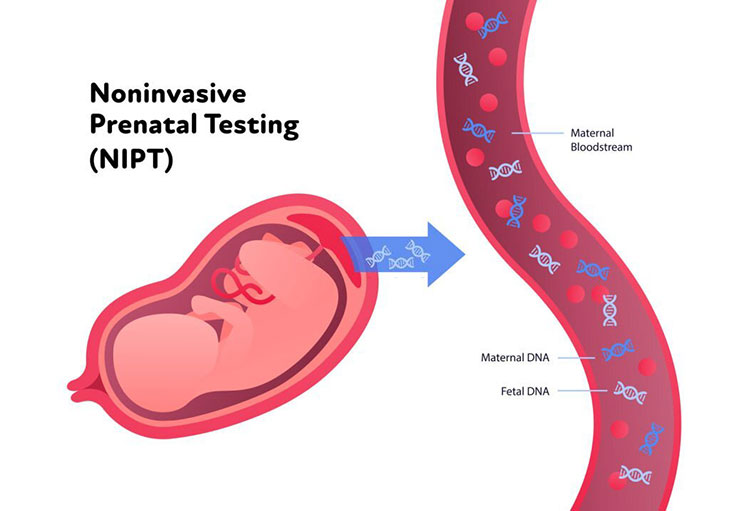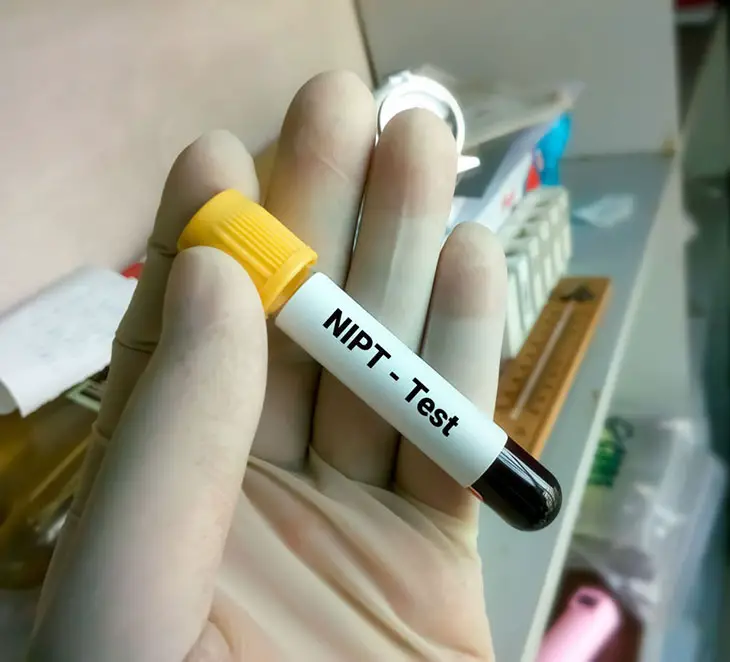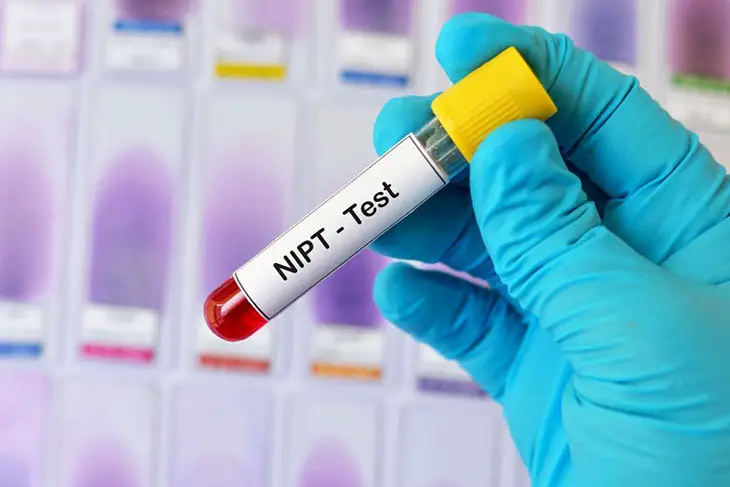You might think that a non-invasive prenatal test (NIPT) can tell you the gender of your baby with 99% accuracy. But when is NIPT gender wrong?
In this blog, I’ll share my story of why the NIPT wrong gender result was incorrect and which situations you should apply NIPT to restrict mistakes.
Read on to learn more about this rare but possible scenario and how to prepare for surprises.
Is NIPT Gender Wrong To Believe?

You want to know if your baby is a baby girl or a boy. You take a non-invasive prenatal test that promises to tell you the answer with 99% certainty.
But what can NIPT gender test be wrong? It happens more often than you think. Here are some of the reasons why your blood test is not preferred for you in any situation:
- You have a medical condition that affects your blood cells, such as a blood transfusion, a bone marrow transplant, or a blood disorder.
- Your baby has genetic abnormalities that affect their chromosomal conditions, such as Turner syndrome or Klinefelter syndrome.
- Your placenta has a different DNA than your baby, such as in cases of vanishing twin syndrome or confined placental mosaicism.
- The lab makes a mistake in handling or analyzing your blood sample. It indicates that it’s not a guarantee of your baby’s gender.
Are There Other Methods To Test Gender Currently?
The accuracy rate of applying NIPT to test gender is not high, and you can use other approaches for genetic screenings, including ultrasound scans and amniocentesis.
In particular:
Use Ultrasound Method
You may have several detailed ultrasounds during your pregnancy, but they differ. The most important is the mid-pregnancy ultrasound, usually done at week 20.
That’s when the ultrasound technician can see your baby’s genitals clearly and tell you the big news.
It’s impossible to tell your baby’s gender from earlier ultrasounds (for example, only the 14th week). They are too blurry and unreliable.
Ultrasound can make the wrong gender prediction up to 5 percent of the time, say experienced doctors.
This genetic test depends on many factors, such as when you have it, how good the sonographer is, and how well your baby cooperates.
They sometimes make mistakes. For example, they may confuse a piece of umbilical cord for a penis. It is not amazing for you!
Use Amniocentesis Or CVS Method
CVS and amnio methods involve taking a sample of your baby’s DNA. Doctors use these tests to check for serious problems like Down syndrome or cystic fibrosis.
They can also tell you your baby’s gender for sure. But they are not safe and can cause a miscarriage.
It would help if you did not have these tests unless you need them. They are not worth the risk of knowing your baby’s gender.
You can trust CVS and Amnio results for your baby’s gender. They are accurate because they take a sample of your baby’s DNA from the placenta.
The only way they can be wrong is if someone mixes up the piece or if your baby has a rare disorder, which a fetal medicine specialist suggests called Mr. Schaffir.
Benefits Of Using NIPT

Non-invasive prenatal testing (NIPT) is a blood test that can tell you that your healthy baby boy or girl is as early as 10 weeks into your pregnancy.
NIPT has many benefits over other methods of gender determination (gender through detailed ultrasounds or CVS), especially effectively restricting risks of health issues.
You can check these benefits here:
- NIPT is safe and simple. It only requires a blood sample from the mother and poses no risk to the baby or the pregnancy.
- NIPT is relatively accurate and reliable. It has a high accuracy rate of over 99% and a low false positive rate of less than 0.1%. It can detect the presence or absence of the Y chromosome, which determines the sex of the baby.
- NIPT is convenient and fast. It can be done anytime after 10 weeks of pregnancy, and the results are usually available within a week or two.
- NIPT is informative and reassuring. It can help you prepare for your baby’s arrival and give you peace of mind about your baby’s health and well-being.
Which Cases Should You Use NIPT?
“Can NIPT test be wrong for gender?” says “yes” if you do not apply NIPT in the right situations.
The ability to detect rate figures about chromosome DNA sequences can be strong or weak, depending on many factors such as abnormal cells and deletion of chromosomes.
You can note the kind of information that NIPT can indicate a positive screening result below.
Which Information Can NIPT Screen For?
NIPT can screen for the following chromosomal abnormalities:
- Down syndrome (trisomy 21) causes intellectual disability and physical features such as a flat face, small ears, and slanted eyes.
- Edwards syndrome (trisomy 18) causes severe congenital disabilities and often leads to miscarriage or stillbirth.
- Patau syndrome (trisomy 13) causes serious problems with the brain, heart, and other organs, usually resulting in death within the first year of life.
- Sex chromosome abnormalities (Turner syndrome (X0) or Klinefelter syndrome (XXY)): They affect the development of the sex organs and sexual characteristics.
Which Information Can NIPT Not Screen For?
Some types of information that NIPT cannot provide, such as:
- Structural abnormalities, such as spina bifida, cleft lip, or heart defects, occur when your baby’s organs or body parts do not form properly.
- Single-gene disorders, such as cystic fibrosis, sickle cell anemia, or Tay-Sachs disease, occur when your baby inherits a faulty gene from one or both parents.
- Mosaicism occurs when your baby has a mixture of normal and abnormal cells with different numbers of chromosomes.
- Microdeletions happen when your baby is missing a small piece of a chromosome, which can cause problems such as DiGeorge syndrome or Prader-Willi syndrome.
How Many Kinds Of NIPT Are There?

Fetal specialists can suggest different types of NIPT for you to select, depending on your demands or how to get chorionic villus sampling.
Health care providers usually give you four main gender blood tests regarding NIPT: Genesis Serenity, Harmony, Natera, and MaterniT21.
Some tests can detect rare conditions like triploidy and microdeletion. Some tests can tell the difference between your and baby’s DNA, making them more accurate.
Therefore, you should consider this problem carefully before conducting NIPT.
The safest way is to ask your genetic specialist which test is best for you and your baby and what are the risks and benefits involved.
This helps you to remove bad news or risk categories for the fetal fraction rate.
FAQs
When Should You Have NIPT During Pregnancy?
NIPT is a blood test that screens your baby for genetic disorders. You can have it as early as 10 weeks of pregnancy. It is optional and not diagnostic.
You should talk to your doctor about whether you need any other invasive tests and what they can tell you about your baby’s health.
How Accurate Does NIPT Bring To You?
NIPT is a highly accurate test that can detect over 99% of chromosomal abnormalities in your baby. It can also tell you your baby’s sex and blood type.
However, it is not a diagnostic test and cannot confirm or rule out any condition.
What Can You Do To Read NIPT Result Right?
You should discuss your result with your doctor and understand what it means for you and your baby. You may need additional tests to confirm or exclude a diagnosis.
It will not make you feel amazing if there are any mistakes in conducting NIPT.
Conclusion
The problem “Is NIPT gender wrong” has been just explained above.
The results can be strongly impacted by many different factors, such as testing techniques, blood pressure, how to get a gender scan, and other chromosomal issues.
It would be best if you chose a good health center to have an accurate reading of chromosome DNA sequences from NIPT.
